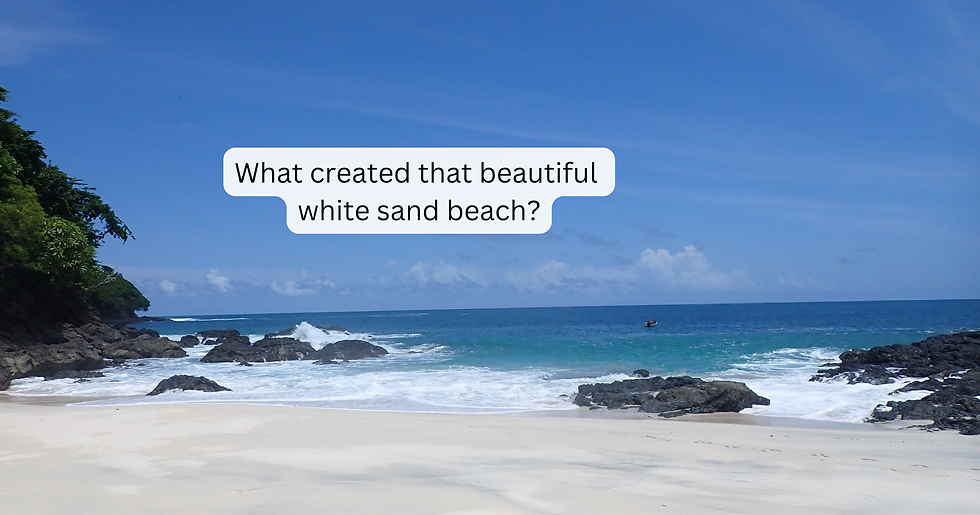Azuero Mantle Backed Howler Monkey
- Cari Mackey

- Feb 25, 2024
- 4 min read
I had a guest the other day say to me; "I can't remember the last time I was in a place where the only sound was that of nature like it is here. I can't even see another building or person." That almost brought tears to my eyes because it was such a great moment of appreciation for the magic of nature and how good it feels.
Being surrounded by nature - her smells, colors, flavors, and sounds, especially waking to the loudest land animal on the planet, is nothing short of spectacular. The Azuero Mantle Backed Howler Monkey Alouatta palliata sap. trabeata is an endemic species of the Azuero Peninsula of Panama in fact, it is the only place this sweet and beautiful animal exists. According to the population studies done from 2001 to 2009 by Pedro G. Méndez-Carvajal, there are only about 3,000 of them left remaining and, as a result of deforestation, illegal trafficking, hunting, electrocution, and forest fires that number is tragically decreasing.
If you have been here to stay with us you are familiar with nature's alarm clock and the troop of about 15 monkeys that we are so fortunate to share this jungle with. Howler monkeys usually have troops of 24 on average with a dominant male leading the howling then followed by other males within the troop.
Only the males do the howling whereas the females have a sweet high-pitched, short mewing sound and the babies make well, little baby sounds until they start trying to practice their howl which sounds like a low guttural light roar about as intimidating as a little kitten trying to be a lion. They howl for a variety of reasons; reliably before a rain storm, for territorial protection from a neighboring troop, awareness of food sources, and overall to communicate with other troops that they are likely related to.
Both male and female howler monkeys will equally leave their family troop to start their own so it is likely that the howling is to communicate with the lone monkey for various reasons including a mating ritual perhaps? Speaking of mating rituals, things can get pretty hot in the jungle; the male will flick his tongue at the female which is quite seductive as you can imagine. It does the trick for the female who allows the male to mount her and after about 30 seconds of a little of this and a little of that, they disengage and that's it. 6 months later a cute little bald baby is born.
The baby will cling to the mother's chest for nursing for the first few weeks until she moves to her back and starts to sample the tasty greens of the canopy at about 4-5 weeks. The baby starts to get brave enough to explore the canopy on her own at about 10 weeks but will still rely on her mothers ability to safely navigate the jungle while riding on her back, holding onto her fur, and wrapping her tail around the base of the mothers tail for almost a year.
Females reach maturity after 3 years, and the males at 4 years growing to an average of about 22 in long (56 cm) and weighing about 15 lbs (7 kg). They breed any time of year, the males having several female mates. Their average life span is 18 years in the wild.

Howler monkeys are always on the move in the jungle canopy to get to the fresh leaves, seeds, flowers, and fruits that they forage on. They get their hydration through leaves and fruits which is quite taxing on their digestion system hence another reason to use their howl to communicate - so they don't have to travel so far to meet up for happy hour with other troops.
Now that we have lived here among this troop of monkeys for 9 years, we have been able to get to know them all quite well, watching for pregnancies, new babies, and trying to live respectfully in their habitat.
Of course, with animals and nature comes a lot of heart break too. We humans are so hard on animal species which is why we have been doing all we can to reforest our property, insulate our power lines, switch to solar power, educate our guests and especially the kids with our badge program, and now we are working with the Primates of Panama organization to build monkey bridges in areas they can't cross the roads. Through our 1% for the Planet program and the generosity of our guests, we are doing research to build bridges for monkeys to safely cross roads and hopefully save not only monkeys lives but also many other animals as well as educating our communities on the importance of investing in the future health of these amazing animals lives.
Knowing this species is facing extinction without a major conservation intervention is a source of inspiration for us to be a part of turning that around. When you come stay with us, and experience these incredible animals, you'll fall in love with these monkeys and by being our guest, you will inherently be part of creating a brighter future for them.
Your Friends in Morrillo,
Cari and Ryan Mackey
Owners and Hosts
Morrillo Beach Eco Resort














Comments